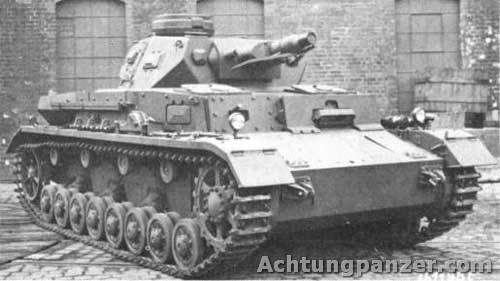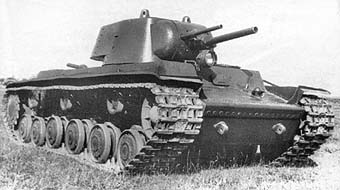Now I have chosen one tank type per fighting nation based on my own judgement. You may only vote for one so pick your tank wisely.
First of all here is the German candidate:

Only 211 Panzerkampfwagen IV (Ausf A/B/C) were produced as of September 30th of 1939, but right away they became the workhorses of Panzer Divisions. Conceived by General Heinz Guderian (1930 - Medium Tank design / Begleitwagen - escort vehicle) himself as a heavy support tank for Panzerkampfwagen III units, the Panzerkampfwagen IV's production was slow but when it appeared it soon proved to be a formidable weapon. Panzerkampfwagen IV's development was partially based on lessons learned from Panzerkampfwagen III and other previous projects. Modifications were carried over the years (such as the design of the hull), updating the vehicle to the needs of the front and many were modified by their crews during service
Followed by the French one:

Renault R-35/39 Light Tank
The R-35 was the most numerous of French light infantry tanks in service in 1940 with over 1600 units completed.
In 1933 the French High Command called for the design of a 6 ton tank as a replacement for the aging Renault FT-17. The vehicle was designed to have a crew of two and to be armed with one or two 7.5mm machine-guns or a 37mm gun. Manufactures that took part in design process were Renault, Forges et Chantiers de la Méditerranée (FCM), Compagnie Général de Construction des Locomotives and Delaunay Belleville.
Then their Soviet counterpart:

The KV-1, massproduced from february 1940 to early 1943. It first saw service in the Finnish winter war, and when Germany attacked Soviet in June 1941, some 636 KV (Kliment Woroshilov) tanks had been built. The KV-I was armed with a 76.2mm L/30.5 gun, but later variants (KV-1A, KV-1B, KV-1C and KV-1S) housed a 76.2mm L/41 gun with better armour penetration. The KV-1E later appeard with additional armour plates. Also a KV-2 was produced. It´s main task was to support infantry and was armed with a 152mm cannon.
Next candidate is the British:

The Matilda II was an improved version of the Matilda I. Equiped with the very efficient 2-pounder gun, it enjoyed above all the thickest armor among the tanks of the time (except perhaps for Russians). Until 1941, no German panzer had a gun powerful enough to pierce it. Only 8.8 cm guns could do it.
They first saw action during the counter offensive at Arras. Then they successfully fought in Africa against the Italians, in Libya as well as in Ethiopia. They remained the most feared enemy of Rommel's panzers until the end of 1941.
Afterwards, luck began to fade. The increasing calibers of the German tanks put an end to its invulnerability while its 2-pounder gun was unable to engage infantery or anti-tank guns at a distance. They disappeared from the front line in 1942, but their chassis went on being used for specialized usages (mine clearing, ...).
Making way for the American candidate:

In March 1941 the United States Army decided it needed a new tank to replace the Grant M2A1. After looking at five different proposals the Sherman M4 was chosen. Production began early in 1942. The original armament was a 75mm gun capable of firing high explosive shells. Its 500hp engine had a maximum speed of 26mph. This was replaced by a 76mm high-velocity gun in February 1944. The tank's suspension was redesigned and improved by the beginning of 1945.
Although inferior to the best German and Soviet tanks in armament and protection, it was superior in terms of reliability, serviceability and cost-effectiveness. The British Army used the Sherman Tank at El Alamein in 1942 and by 1943 was the mainstay of Allied operations in Africa and Europe.
Now wasn't this a weird post?
First of all here is the German candidate:

Only 211 Panzerkampfwagen IV (Ausf A/B/C) were produced as of September 30th of 1939, but right away they became the workhorses of Panzer Divisions. Conceived by General Heinz Guderian (1930 - Medium Tank design / Begleitwagen - escort vehicle) himself as a heavy support tank for Panzerkampfwagen III units, the Panzerkampfwagen IV's production was slow but when it appeared it soon proved to be a formidable weapon. Panzerkampfwagen IV's development was partially based on lessons learned from Panzerkampfwagen III and other previous projects. Modifications were carried over the years (such as the design of the hull), updating the vehicle to the needs of the front and many were modified by their crews during service
Followed by the French one:

Renault R-35/39 Light Tank
The R-35 was the most numerous of French light infantry tanks in service in 1940 with over 1600 units completed.
In 1933 the French High Command called for the design of a 6 ton tank as a replacement for the aging Renault FT-17. The vehicle was designed to have a crew of two and to be armed with one or two 7.5mm machine-guns or a 37mm gun. Manufactures that took part in design process were Renault, Forges et Chantiers de la Méditerranée (FCM), Compagnie Général de Construction des Locomotives and Delaunay Belleville.
Then their Soviet counterpart:

The KV-1, massproduced from february 1940 to early 1943. It first saw service in the Finnish winter war, and when Germany attacked Soviet in June 1941, some 636 KV (Kliment Woroshilov) tanks had been built. The KV-I was armed with a 76.2mm L/30.5 gun, but later variants (KV-1A, KV-1B, KV-1C and KV-1S) housed a 76.2mm L/41 gun with better armour penetration. The KV-1E later appeard with additional armour plates. Also a KV-2 was produced. It´s main task was to support infantry and was armed with a 152mm cannon.
Next candidate is the British:

The Matilda II was an improved version of the Matilda I. Equiped with the very efficient 2-pounder gun, it enjoyed above all the thickest armor among the tanks of the time (except perhaps for Russians). Until 1941, no German panzer had a gun powerful enough to pierce it. Only 8.8 cm guns could do it.
They first saw action during the counter offensive at Arras. Then they successfully fought in Africa against the Italians, in Libya as well as in Ethiopia. They remained the most feared enemy of Rommel's panzers until the end of 1941.
Afterwards, luck began to fade. The increasing calibers of the German tanks put an end to its invulnerability while its 2-pounder gun was unable to engage infantery or anti-tank guns at a distance. They disappeared from the front line in 1942, but their chassis went on being used for specialized usages (mine clearing, ...).
Making way for the American candidate:

In March 1941 the United States Army decided it needed a new tank to replace the Grant M2A1. After looking at five different proposals the Sherman M4 was chosen. Production began early in 1942. The original armament was a 75mm gun capable of firing high explosive shells. Its 500hp engine had a maximum speed of 26mph. This was replaced by a 76mm high-velocity gun in February 1944. The tank's suspension was redesigned and improved by the beginning of 1945.
Although inferior to the best German and Soviet tanks in armament and protection, it was superior in terms of reliability, serviceability and cost-effectiveness. The British Army used the Sherman Tank at El Alamein in 1942 and by 1943 was the mainstay of Allied operations in Africa and Europe.
Now wasn't this a weird post?





Comment